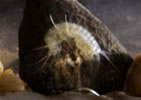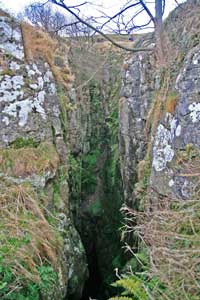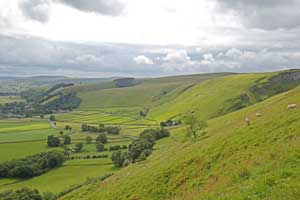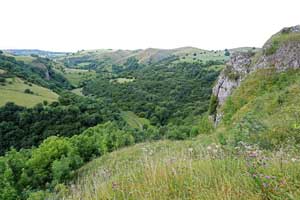This area includes the White Peak - the limestone part of the Peak District National Park, and surrounding limestones. Most of the limestone area is pastoral country with most settlements in the Dales. There is much evidence of industrial exploitation in the area, particularly lead mining, with numerous mines intersecting natural caves. The area includes a wide variety of habitats for the biospeleologist to explore with allogenic and autogenic streams, fossil passages, lots of sediment banks, extensive mine workings, open shafts such as Eldon Hole and huge underground voids such as Titan shaft.
|
Castleton. Peak and Speedwell Cavern catchments from Treak Cliff |
Ice Ages
During the last ice (the Devensian, that ended around 10 000 years ago) northern England was glaciated, and although conditions were still very cold, sub-glacial tundra was present, similar to modern day Siberia. Much of the life eked out a precarious existence or moved to warmer climes via the land bridge that still linked the south-eastern part of England to the near continent. It is possible that some organisms survived the Ice Age by living deep underground where the temperature was above freezing, but food would have been a major difficulty. Organisms that survive underground for generations will often have adaptations to help them survive, and will lose some features that are of no benefit e.g. use of eyes. Those that were or became adapted to life underground became troglobites - cave dwellers that complete their life cycle in the cave and do not exist outside of this environment. These are the most fascinating creatures you will see underground, but they are also part of a delicate ecosystem that is easily disturbed by cavers and man’s activities.
|




